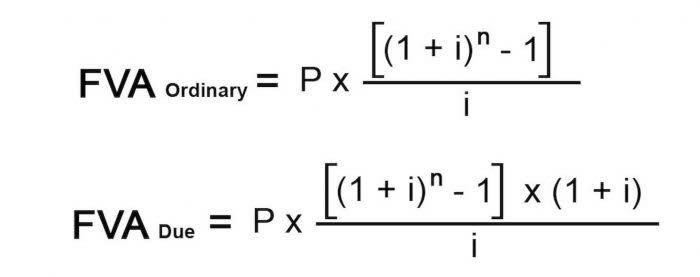Blog
Contribution Margin Ratio Accounting for Managers
- March 2, 2020
- Posted by: chatana
- Category: Bookkeeping
Content

This document is different from a multi-step income statement, where you first subtract cost of goods sold from sales and then contribution margin ratio subtract selling, general, and administrative costs. Use the formula above to include gross profit math so you can see both.
He has worked more than 13 years in both public and private accounting jobs and more than four years licensed as an insurance producer. His background in tax accounting has served as a solid base supporting his current book of business. You work it out by dividing your contribution margin by the number of hours worked. This will suggest whether the extra bulk orders and at what minimum https://www.bookstime.com/ quantity and price the business should accept. Mark P. Holtzman, PhD, CPA, is Chair of the Department of Accounting and Taxation at Seton Hall University. He has taught accounting at the college level for 17 years and runs the Accountinator website at , which gives practical accounting advice to entrepreneurs. As a result, you will make poor decisions based on inaccurate data.
How To Calculate Contribution Margin as a Percentage or Ratio
Before calculating your contribution margin, you need to be clear about which costs are variable and which ones are fixed. Variable business costs are expenses that change according to the number of a product that is produced — for example, materials or sales commissions. Fixed business costs stay the same, irrespective of the number of products that are produced, such as insurance and property taxes. A key characteristic of the contribution margin is that it remains fixed on a per unit basis irrespective of the number of units manufactured or sold. On the other hand, the net profit per unit may increase/decrease non-linearly with the number of units sold as it includes the fixed costs.
- It basically gives a clearer picture of how the company’s expenses are structured and what contribution is given by each unit sold by the company that in turn goes toward covering the company’s fixed costs.
- Sales equals 1 million bottles multiplied by $1.50 each, which comes to $1.5 million.
- The contribution margin ratio and percentage are very useful for management when performing breakeven analyses.
- If you have visibility into what causes profits, you can add fields based on the decisions you need to make to drive more profits.
- For example, in retail, many functions that were previously performed by people are now performed by machines or software, such as the self-checkout counters in stores such asWalmart,Costco, andLowe’s.
You need to fill in the following inputs to calculate the contribution margin using this calculator. As you can see, the contribution margin per-unit remains the same. Most likely, however, the contribution margin will come in at much less than 100 percent, and maybe even less than 50 percent. In reality, a “good” contribution margin is all relative, depending on the nature of a given company, its expense structure, and whether the company is competitive with its business peers. A price change is an easy way to improve the margin but the business needs to evaluate whether the customer is willing to pay more for the product.
Analysis and Interpretation of the Contribution Margin
A low margin typically means that the company, product line, or department isn’t that profitable. An increase like this will have rippling effects as production increases. Management must be careful and analyze why CM is low before making any decisions about closing an unprofitable department or discontinuing a product, as things could change in the near future. This is because fee-for-service hospitals have a positive contribution margin for almost all elective cases mostly due to a large percentage of OR costs being fixed. For USA hospitals not on a fixed annual budget, contribution margin per OR hour averages one to two thousand USD per OR hour.
Accordingly, you need to fill in the actual units of goods sold for a particular period in the past. However, you need to fill in the forecasted units of goods to be sold in a specific future period. This is if you need to evaluate your company’s future performance. In the Dobson Books Company example, the contribution margin for selling $200,000 worth of books was $120,000.
Reduce Shipping Costs
It can help to know which products are giving the highest contribution or which products the company is selling at a loss, or which product line is underperforming. If you want to increase net income by $2000, then you would need to make about $3,333 ($2,000/60%) in sales. Contribution margins represent the revenue that contributes to your profits after your company reaches its break-even point .

We would consider the relevant range to be between one and eight passengers, and the fixed cost in this range would be $200. If they exceed the initial relevant range, the fixed costs would increase to $400 for nine to sixteen passengers. Remember that your contribution margin income statement will reflect the same figure for net income as your regular income statement .
The Formula and Result
You might wonder why a company would trade variable costs for fixed costs. One reason might be to meet company goals, such as gaining market share. Other reasons include being a leader in the use of innovation and improving efficiencies. If a company uses the latest technology, such as online ordering and delivery, this may help the company attract a new type of customer or create loyalty with longstanding customers. In addition, although fixed costs are riskier because they exist regardless of the sales level, once those fixed costs are met, profits grow.
What is contribution margin ratio example?
This may include items such as coffee beans, water, milk, disposable cups, and labor costs which total $4,000. In this example, the contribution margin is $10,000 – $4,000 = $6,000. The contribution margin ratio shows a margin of 60% ($6,000/$10,000). That sounds like a good result.
This is because it indicates the rate of profitability of your business. Fixed costs are the costs that do not change with the change in the level of output. In other words, fixed costs are not dependent on your business’s productivity. Furthermore, the variable costs can be either direct or indirect. Direct Costs are the costs that can be directly identified or allocated to your products. For instance, direct material cost and direct labor cost are the costs that can be directly allocated with producing your goods.
Contribution format income statements can be drawn up with data from more than one year’s income statements, when a person is interested in tracking contribution margins over time. Perhaps even more usefully, they can be drawn up for each product line or service. Here’s an example, showing a breakdown of Beta’s three main product lines. Now that we’ve overviewed the basics of contribution margin ratio, it’s time to get calculating on your own. Using the aforementioned formula, find your contribution margin and then divide it by the sales income of an individual product to yield your contribution margin ratio.

Do these labor-saving processes change the cost structure for the company? The CVP relationships of many organizations have become more complex recently because many labor-intensive jobs have been replaced by or supplemented with technology, changing both fixed and variable costs. For those organizations that are still labor-intensive, the labor costs tend to be variable costs, since at higher levels of activity there will be a demand for more labor usage. To determine overall profitability, compare total contribution margin to fixed costs. Net income equals the excess of contribution margin over fixed costs. Management uses the contribution margin in several different forms to production and pricing decisions within the business. This concept is especially helpful to management in calculating the breakeven point for a department or a product line.
Point of sale
This will ensure you don’t upset customers and while increasing your margin. Some products may yield a 75 percent margin, while others only bring in 10 percent.
What is another name for variable cost?
Variable costs are sometimes called unit-level costs as they vary with the number of units produced.
The contribution margin ratio is the percentage of sales revenues, service revenues, or selling price remaining after subtracting all of the variable costs and variable expenses. The contribution margin ratio is a formula that calculates the percentage of contribution margin relative to net sales, put into percentage terms. The answer to this equation shows the total percentage of sales income remaining to cover fixed expenses and profit after covering all variable costs of producing a product. When computing contribution margin, subtract all variable costs, including variable manufacturing costs and variable selling, general, and administrative costs.
Take a look at how much it costs to produce your product, and figure out ways to reduce the cost without lowering the quality. The simplest way to break it down is to look at it by individual product or service. Using the ecommerce example again, if your company sells custom rugs for $50 and it costs you $30 to source the materials and produce the rug, your margin is $20. Once you’ve calculatedyour contribution margin, use this number in conjunction with your total fixed expenses for the given time period to calculate net profit or net loss.

